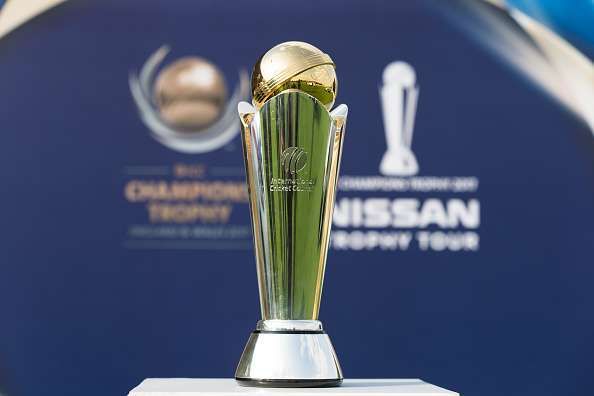
Does the ICC Champions Trophy get the credit it deserves?
In 1998, Jagmohan Dalmiya, considered by many as the pioneer of modern administration, conceptualised an idea. It involved the best eight teams in the world; Dalmiya wanted them to compete in a pure knockout tournament.
The Champions Trophy was an experiment whichever way you look at it. The venue was Bangladesh. The winner stayed and the loser bowed out, which meant the players had to bring out their A-game to the fore from the word go.
At the end of 11 days of action, we had seen some exciting matches in front of good-sized crowds. And South Africa, a team constantly on the rise and looking to dominate the game in the following years, won their maiden title.
The ICC realised it had found a gem. Keeping in mind the success the event had for a small nation like Bangladesh, it decided to try the concept in another small nation a couple of years later – Kenya.
The tournament followed the same format as in '98, and you could see the teams bringing out the best, ensuring that fans got to see the top players at their most focussed and firing on all cylinders. New Zealand, forever a dark horse in major events, emerged as the winners in the competition.
What the competition showed was that it had a future to it, provided it was conducted professionally, like the World Cup, keeping several things in mind. It’s fair to say that the organizers did not keep those things in mind, when they gave the competition’s hosting rights to Sri Lanka in September 2002, despite the fact that the weather forecast couldn’t possibly get any worse.
Expectedly, the rain showed no mercy, at the worst possible juncture – on the day of the final, not once but twice. A terrific tournament had ended on a whimper, with India and Sri Lanka sharing the crown.
We presumed the ICC would have learnt their lesson from that edition, but sadly, that did not turn out to be the case.
The next edition was staged bang at the start of the English football season in 2004, and the effects were clearly seen. England reached the final to brighten some hopes among the spectators, but lost in dramatic fashion in near darkness at The Oval.
In 2006, India reluctantly hosted the event and bowed out early, and right at the end the competition courted controversy when Sharad Pawar was allegedly pushed from the dias by the victorious Australian team.
The 2009 edition was held in South Africa, but not before some more drama. Pakistan were initially scheduled to host the event but were unable to do so after the Lahore attacks on the Sri Lankan cricketers.
The administrators had had enough with the event and it was declared that the 2013 edition would be the last one. But it's interesting to see that when a definitive decision is taken over something, it suddenly begins to chart a course of its own in the other direction.
The last edition of the competition, barring the rain-affected final, was really a throwback to the early editions: big crowds, flamboyant cricket and a deserved winner. India, entering the event as the underdogs (dare I say) went on to put flawless performances throughout the competition; all of a sudden, a flagging competition seemed to have got its share of the limelight.
Now, just for a moment, think back to why the event has suffered such a great deal in the years gone by: factors like weather, reluctance, security. Not in one of these years was the cricket ever under the microscope, despite those editions producing some scintillating performances.
The India-South Africa semifinal in 2002, the Browne-Bradshaw stand in the final in 2004, Shane Watson show in the semi-fnal and final in 2009 – these are just a few instances in the event’s history which indicate that the players take the competition seriously.
The Champions Trophy is a bit like the sportspersons whose achievements take a back-seat because they have endured a lot off the field, which overshadows what they mustered on the field. Unlike the World Cup, the Champions Trophy guarantees the viewer a contest in every game. It is no different this time. But like in 2013, there are lingering doubts about its future.
So what can the ICC do to ensure this event gets more traction than what it is getting right now? For starters, they could take a cue from other sports. The Euros in football are held between two World Cups, the Winter Olympics are placed between two Summer Olympics.
Maybe staging or continuing to stage the Champions Trophy between two World Cups is an option.
Secondly, the venue for the event. Keeping the event in a place like England in June is like asking Lionel Messi to play as a centre-back: a recipe for disaster.
Clearly, the ICC are prone to taking big gambles, having staged the event in 2017 at exactly the same time and venue as 2013. But the upcoming edition of the event is more important than ever for the ICC, keeping in mind that there might not be a world event next year, if it is indeed decided to make the World T20 a quadrennial event.
Hence the revenues become even more important, and judging by the ticket sales so far, it looks like India will be the major source of the bucks once again.
The question, however, is: Will ICC be reliant on the Men in Blue once again to win the event and extend it to another edition? Only time will tell.

